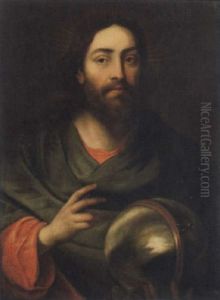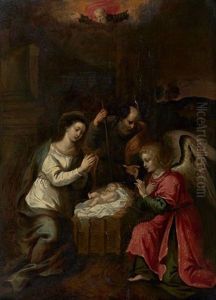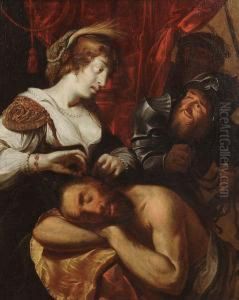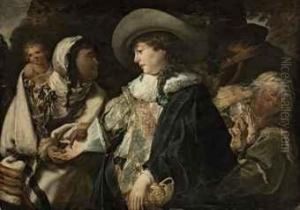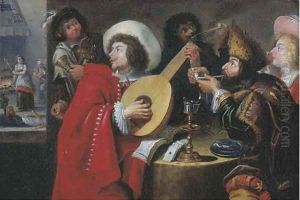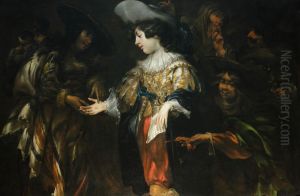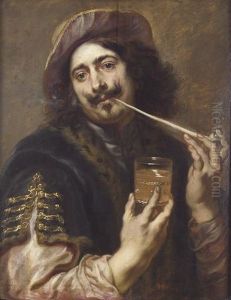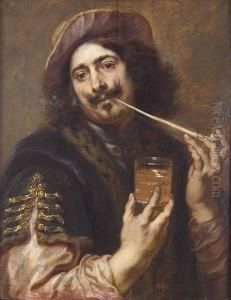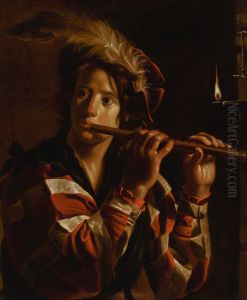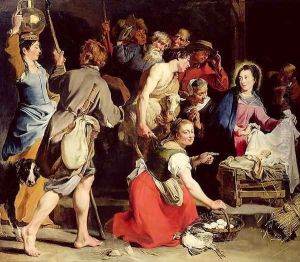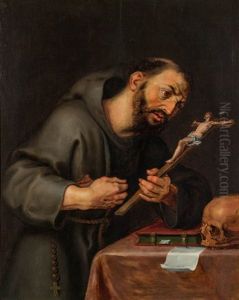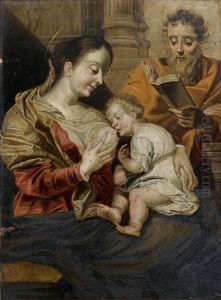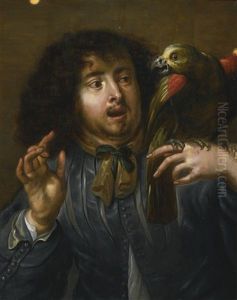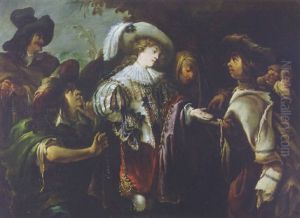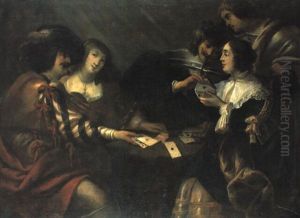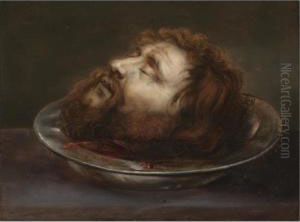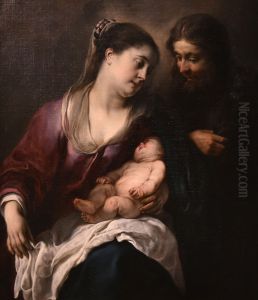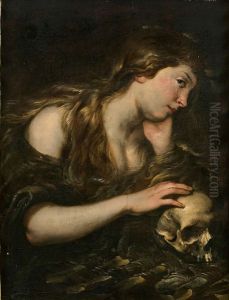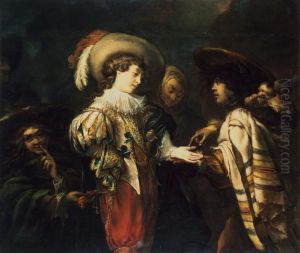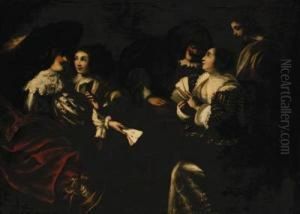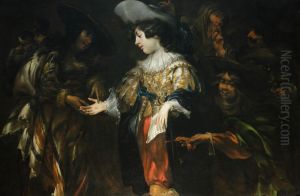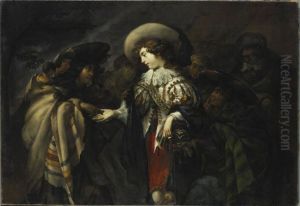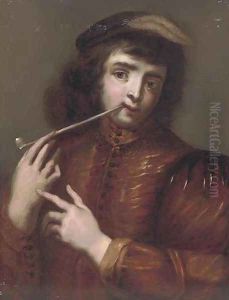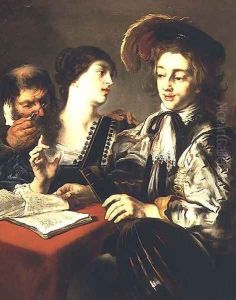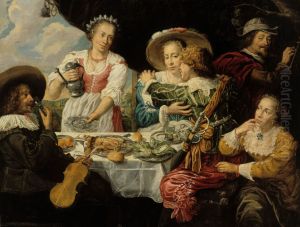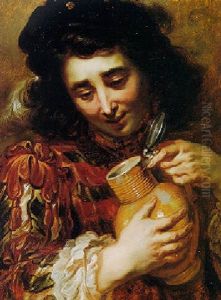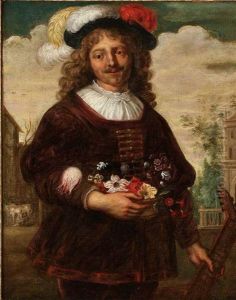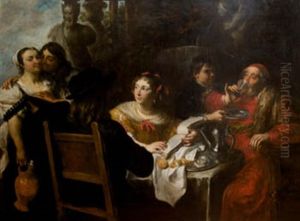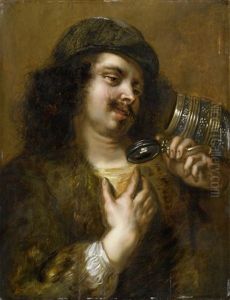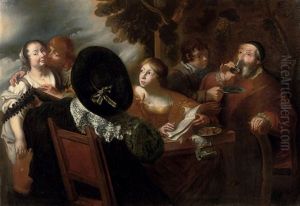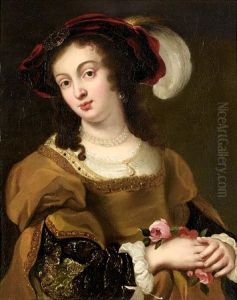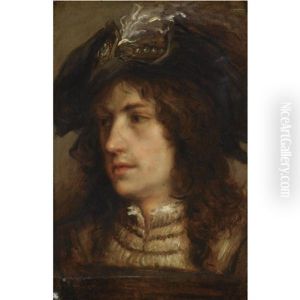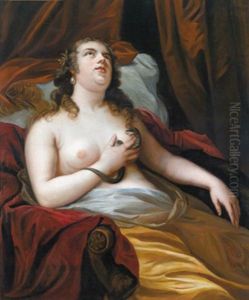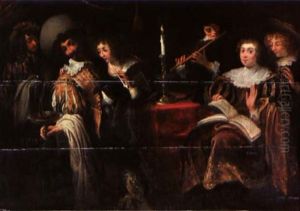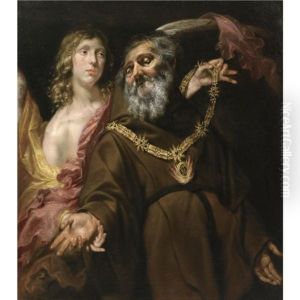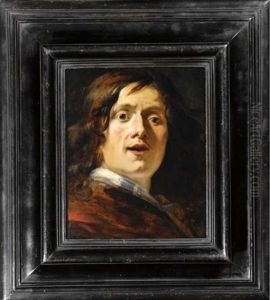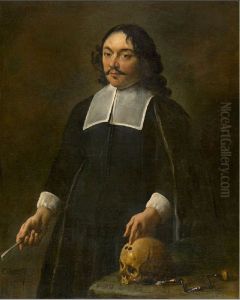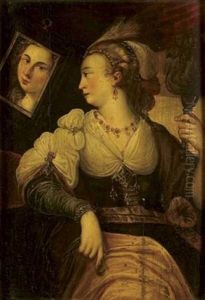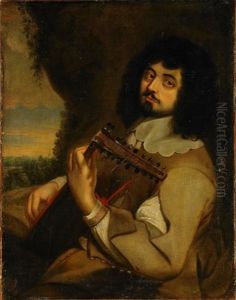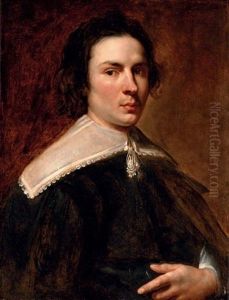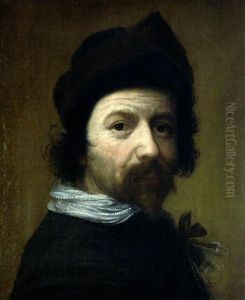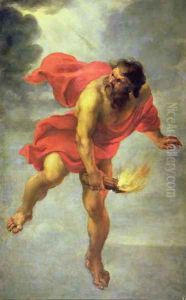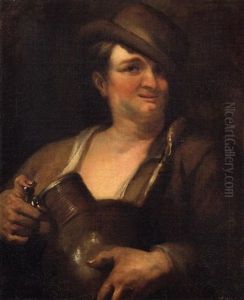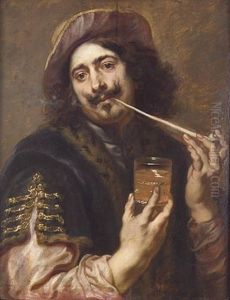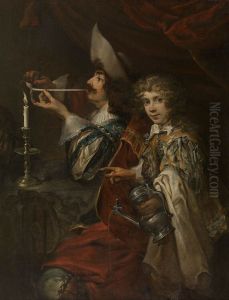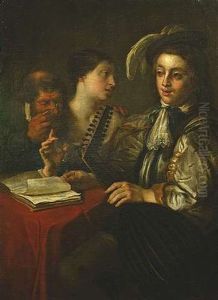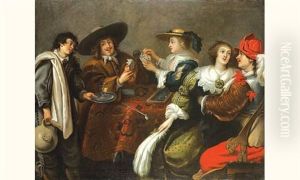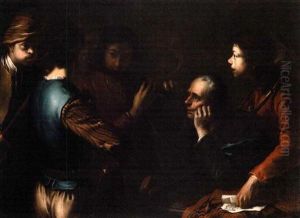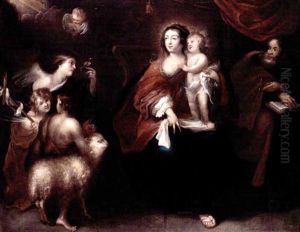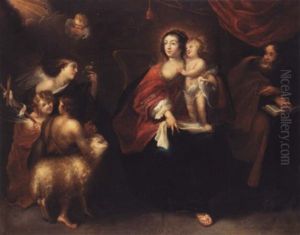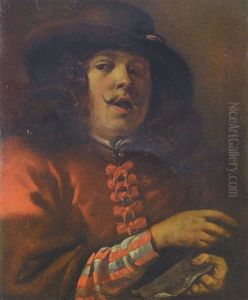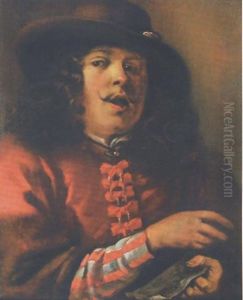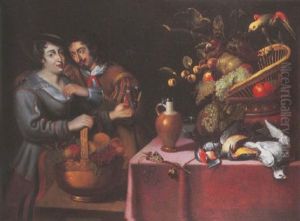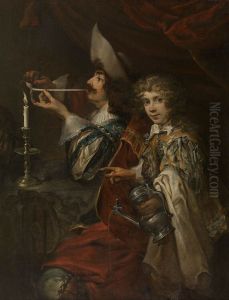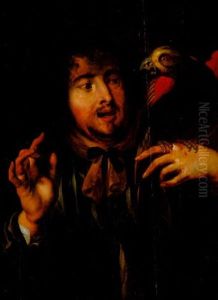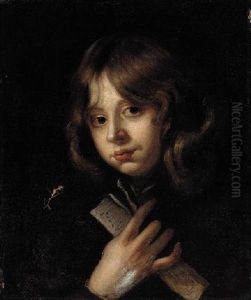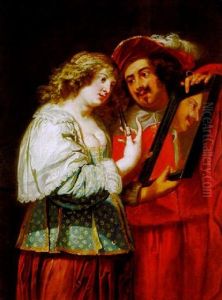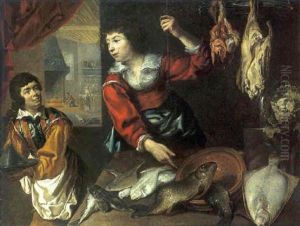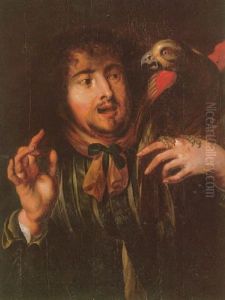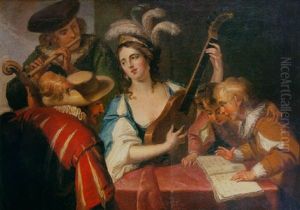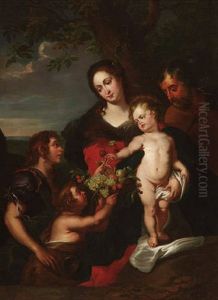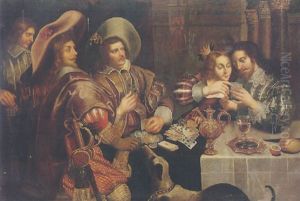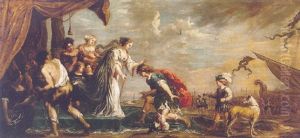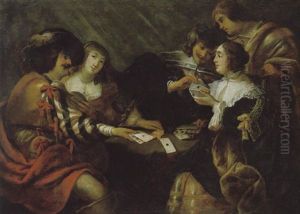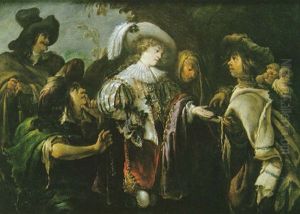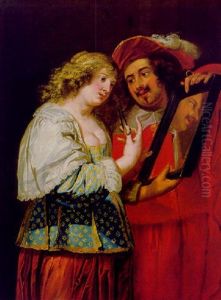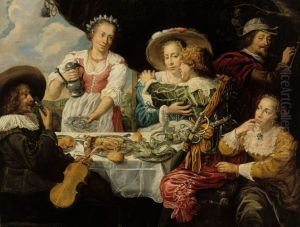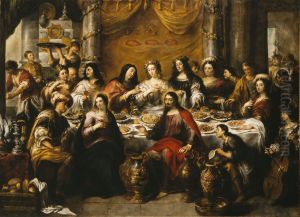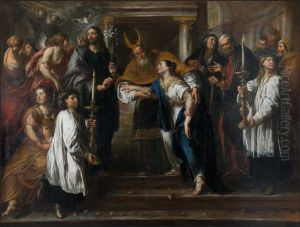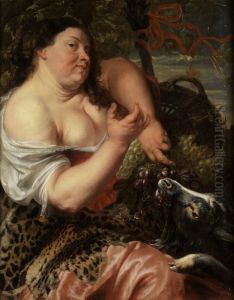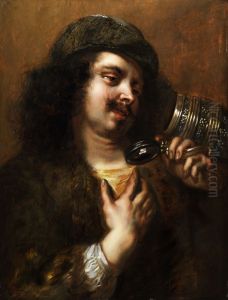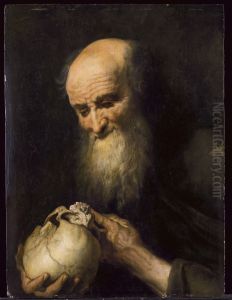Jan Cossiers Paintings
Jan Cossiers was a Flemish painter born on July 15, 1600, in Antwerp, a city renowned for its vibrant artistic community. He was the son of Antoon, a cloth dealer, and painter, and his early life was steeped in the artistic environment of Antwerp. Training initially with his father, Cossiers later became a pupil of Cornelis de Vos. He subsequently became a master in the Antwerp Guild of Saint Luke by 1620-1621, marking his official emergence as an artist.
Cossiers’ work was heavily influenced by the prevailing Baroque style, particularly the dynamism and colorism of Peter Paul Rubens, who was the dominant figure in Flemish art during that time. In the 1620s, Cossiers travelled to Italy, which was a common practice among artists seeking to refine their craft and find inspiration. His stay in Italy, especially in Rome, had a profound impact on his artistic development. He was deeply influenced by the works of Caravaggio and his followers, which is evident in his use of chiaroscuro and the intensity of his figures’ expressions.
Upon returning to Antwerp in the late 1620s, Cossiers established himself as a leading painter of his generation. He produced a wide range of works, including history paintings, genre scenes, and portraits. His genre scenes often depicted merry companies and musicians, reflecting the tastes of the affluent middle-class in Antwerp. Cossiers also received commissions for religious works from local churches, and his paintings were sought after by collectors and patrons.
In addition to his painting, Cossiers was active in the Antwerp art community, serving as a dean of the Guild of Saint Luke. He also took on students, passing on his skills and knowledge to the next generation of artists. Among his pupils was the notable still life painter Jan Davidsz. de Heem.
Jan Cossiers continued to work and contribute to the artistic life of Antwerp until his death on July 15, 1671. He left behind a body of work that reflects both the influence of the Italian masters and the rich artistic culture of Flanders. Cossiers is remembered as a significant figure in the Flemish Baroque movement, whose works continue to be appreciated for their vivid portrayal of life and emotion during the 17th century.
